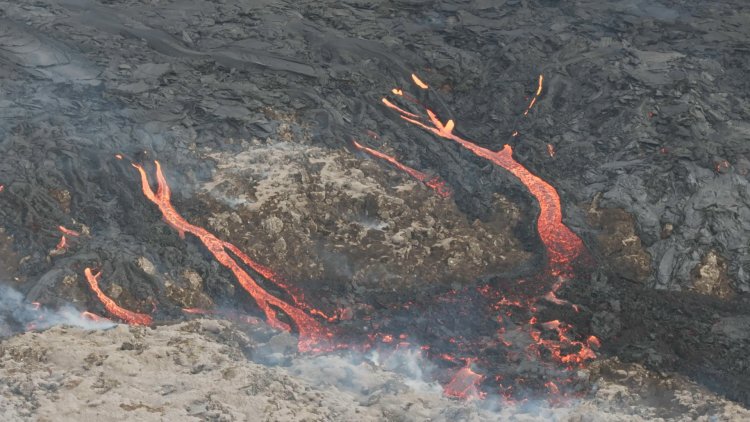New Volcano Erupts in Iceland's Reykjanes Peninsula

A new volcano erupted on the Reykjanes peninsula in southwestern Iceland, spewing fountains of red-hot lava into the air shortly after authorities evacuated the nearby town of Grindavik.
A large white cloud of smoke could be seen billowing up against the blue sky, with orange lava fountains bubbling out of a crack in the ground near Sundhnukagigar, north of Grindavik.
The eruption was the fifth in six months on the Reykjanes peninsula.
Two hours after the start of the eruption, lava was flowing less than a kilometer from a defensive barrier protecting the fishing village of Grindavik, the barrier itself located about another kilometer from the northern tip of the town.
Most of the 4,000 residents had evacuated Grindavik in November, prior to a December eruption.
Lava flowed into the town's streets during another eruption in January, engulfing three homes.
While the large share of those who were in the town -- for work or visits -- left immediately, a few die-hard residents refused to leave, the Department of Civil Protection and Emergency Management said on its Facebook page.
"Despite recommendations from response teams to leave the town, three residents remain in Grindavik. Such actions are not advisable," it said.
The nearby Blue Lagoon geothermal spa, Iceland's biggest tourist attraction known for its turquoise waters, said it had evacuated its facilities.
"The eruption cloud reached an altitude of about 3.5 kilometers at the beginning of the eruption" and the length of the fissure was estimated at over one kilometer, the Iceland Meteorological Office said shortly after the eruption began at 12:46 pm.
Around 90 minutes later, the Department of Civil Protection and Emergency Management said the fissure had extended to 3.4 kilometers.
The lava flow was heavy, estimated at between 1,500 and 2,000 cubic meters per second, the IMO said.
The eruption came almost three weeks after the end of a previous eruption that had been ongoing since March 16.















